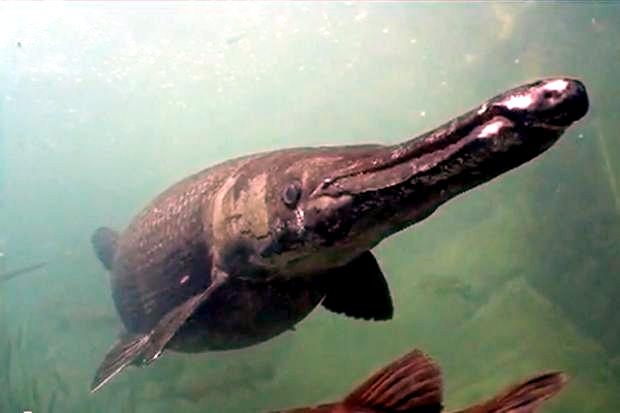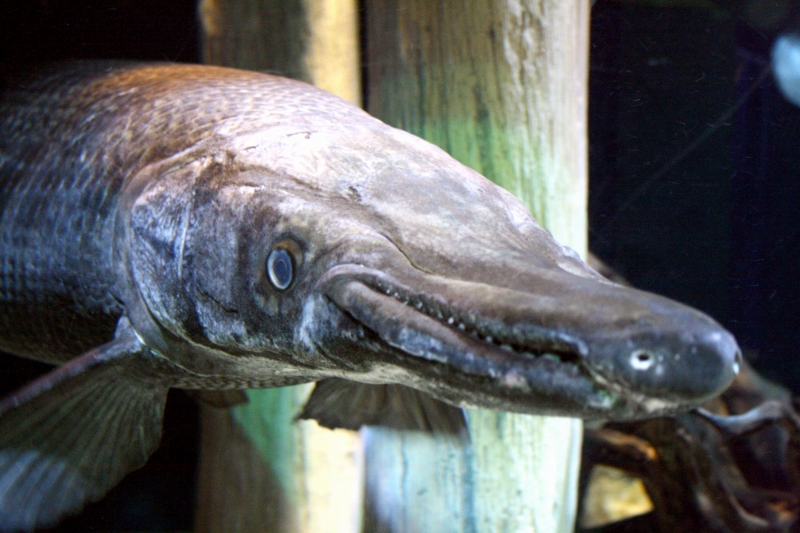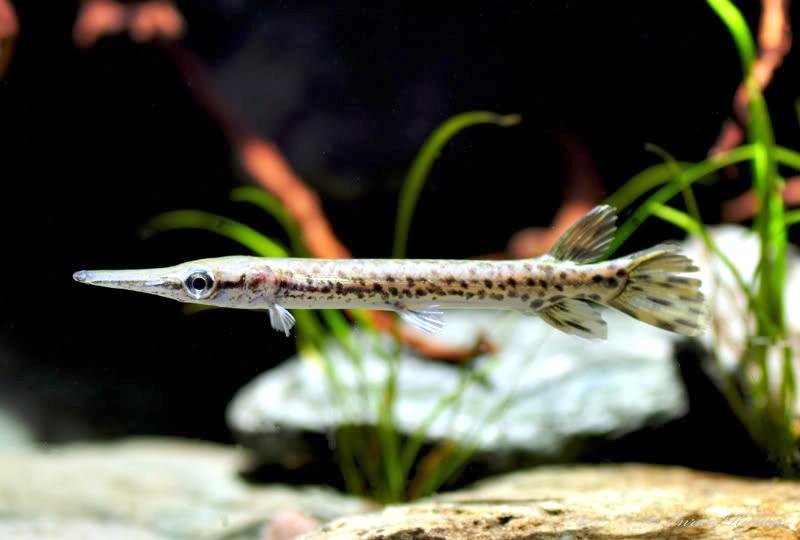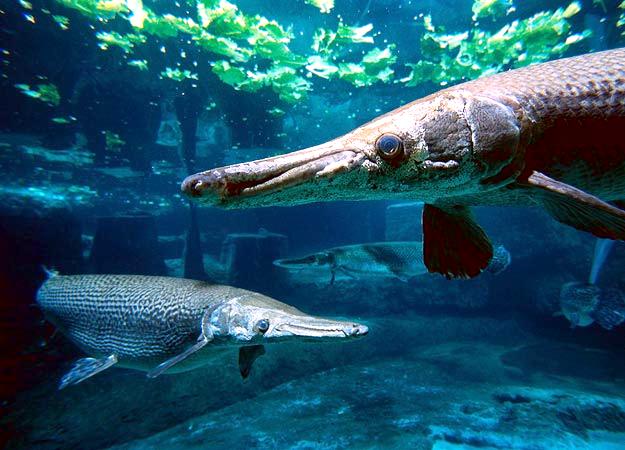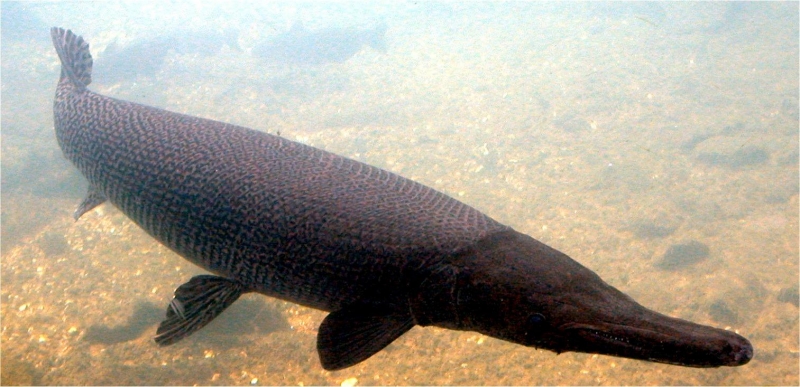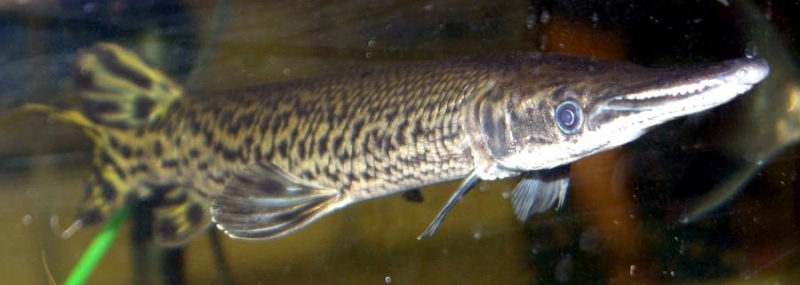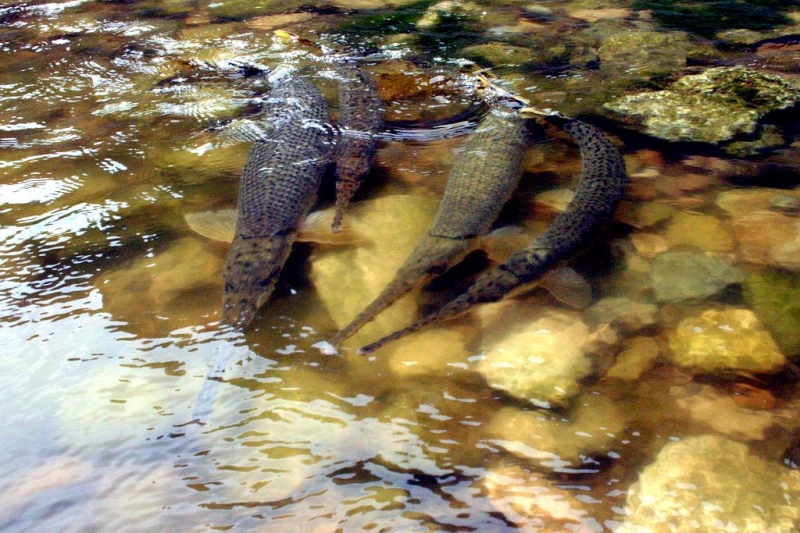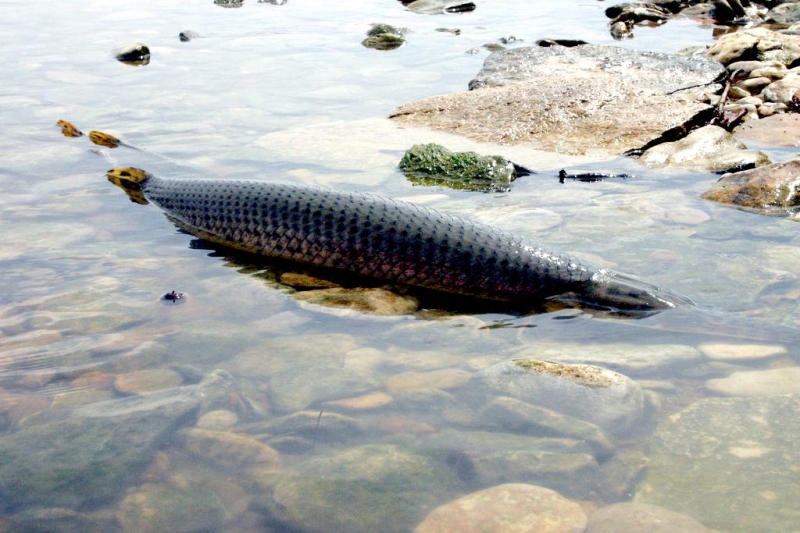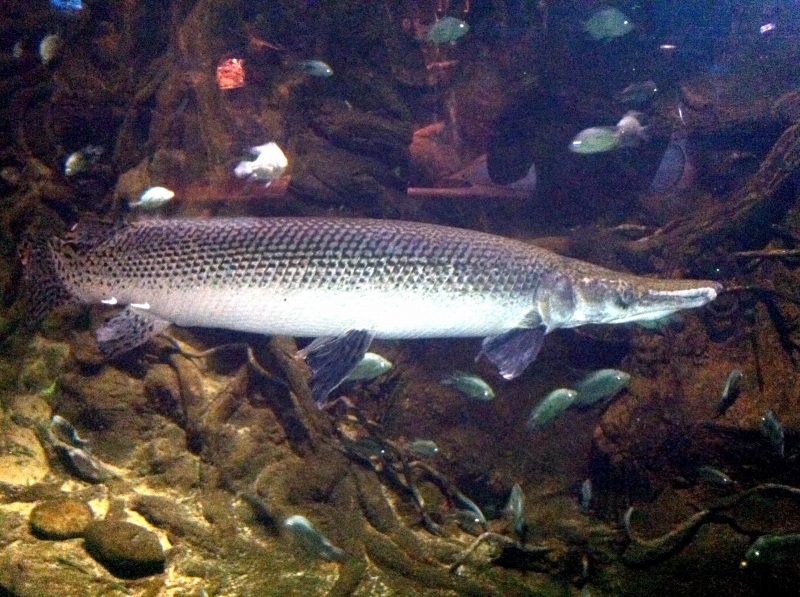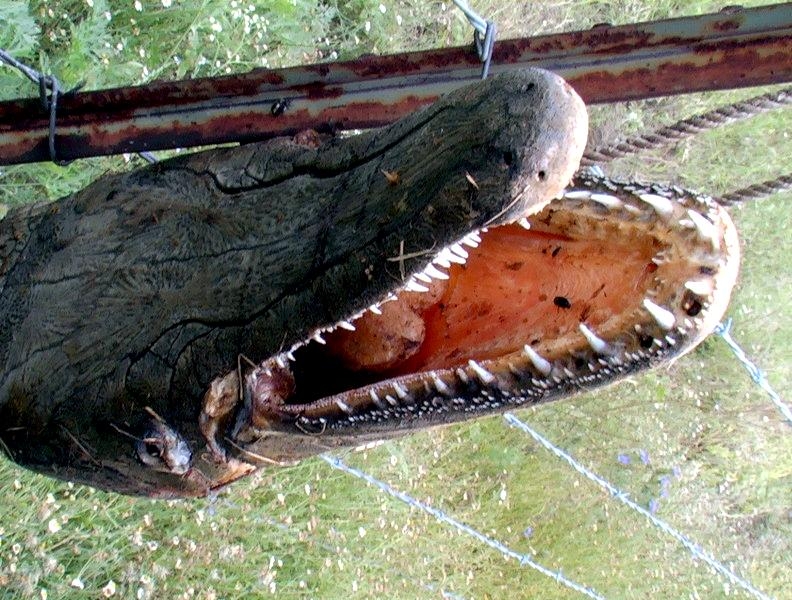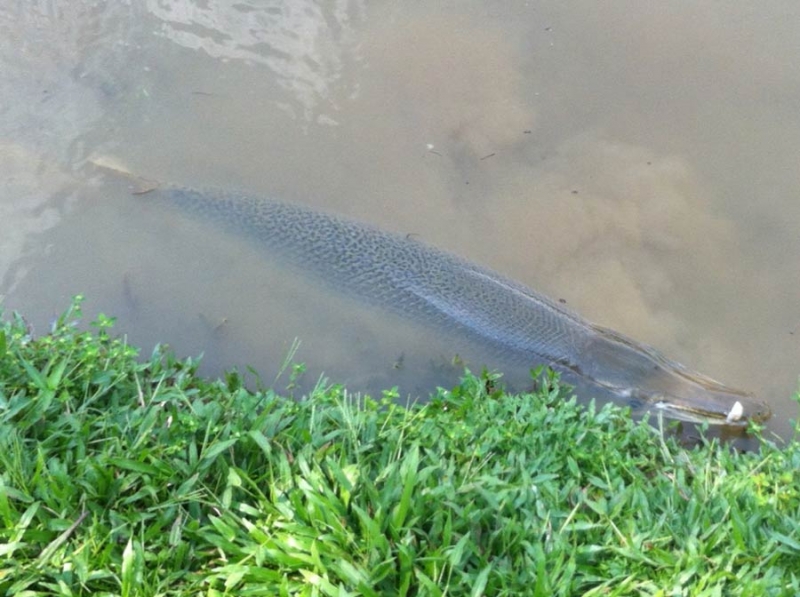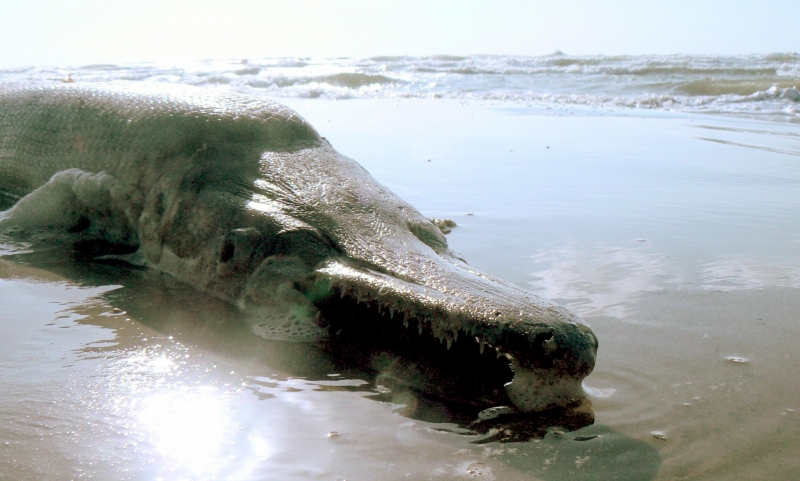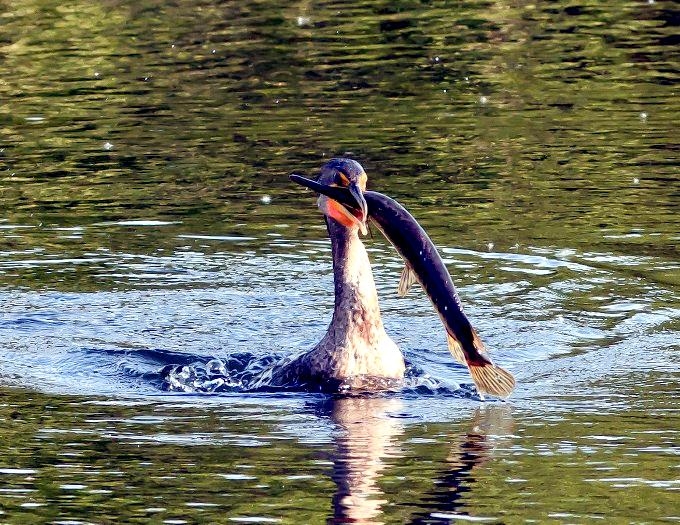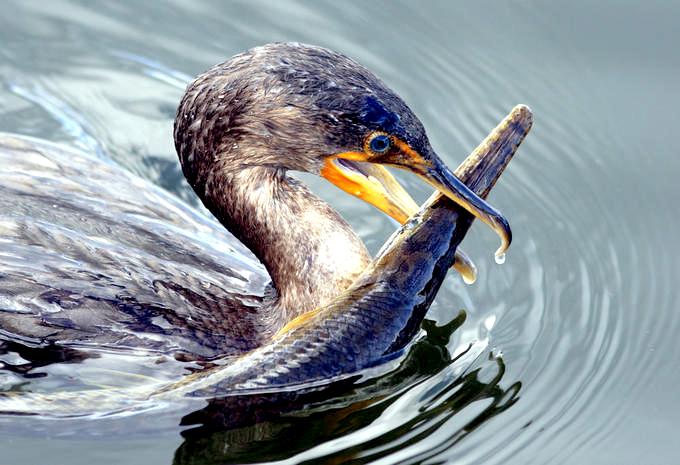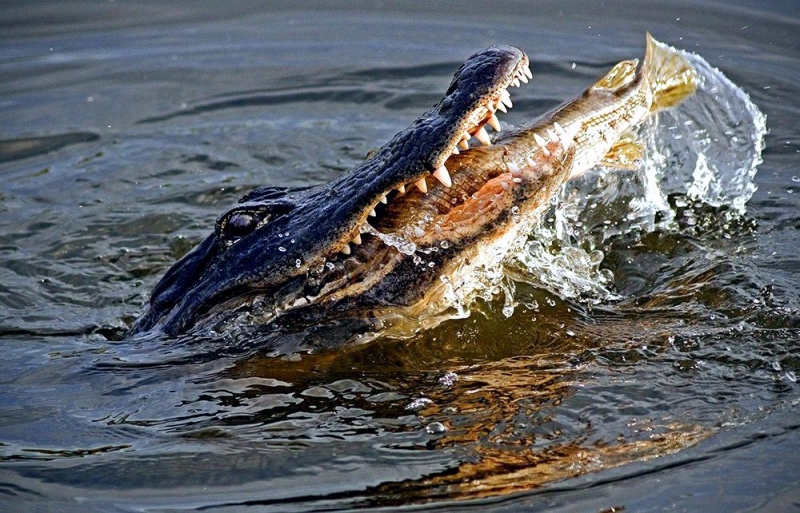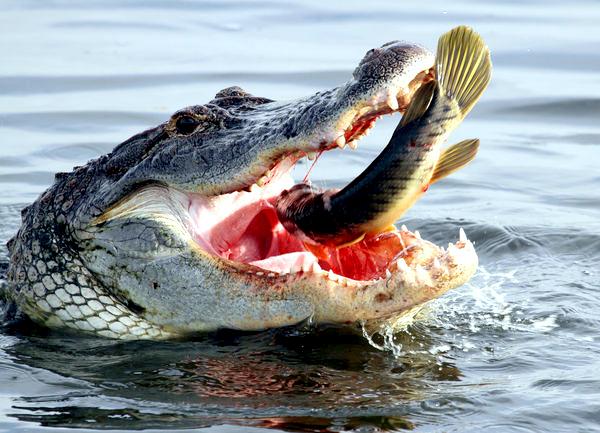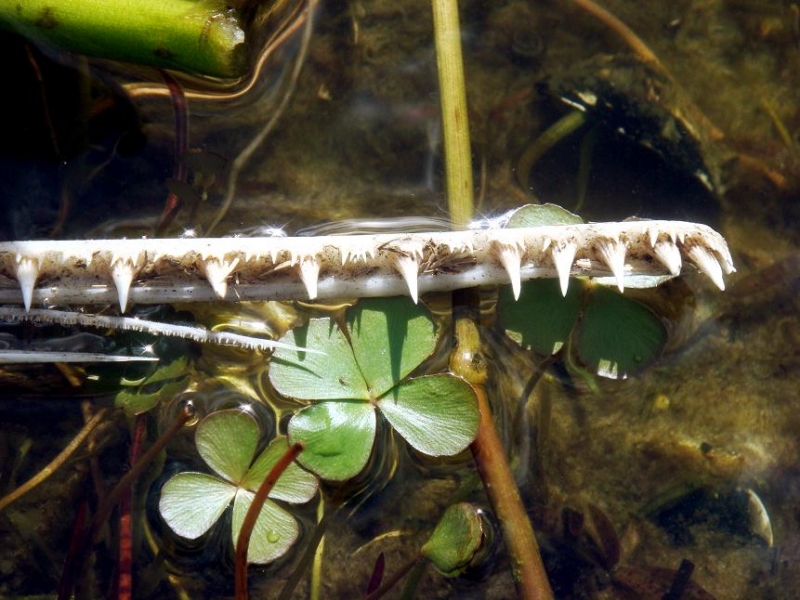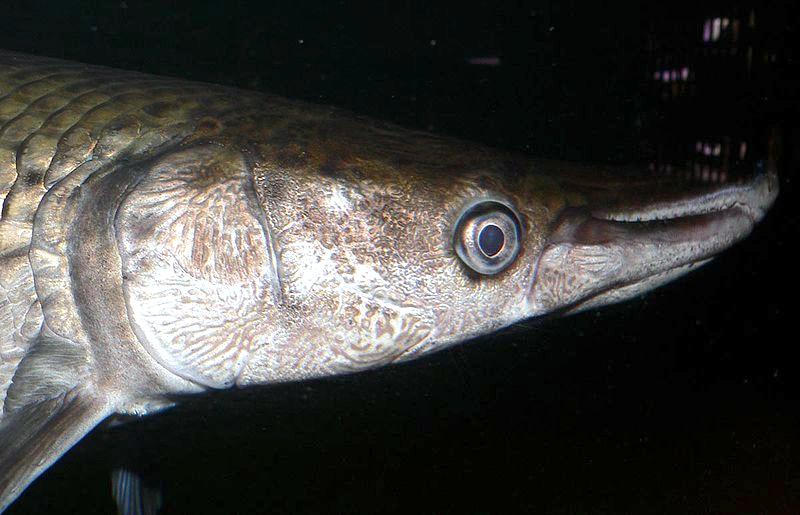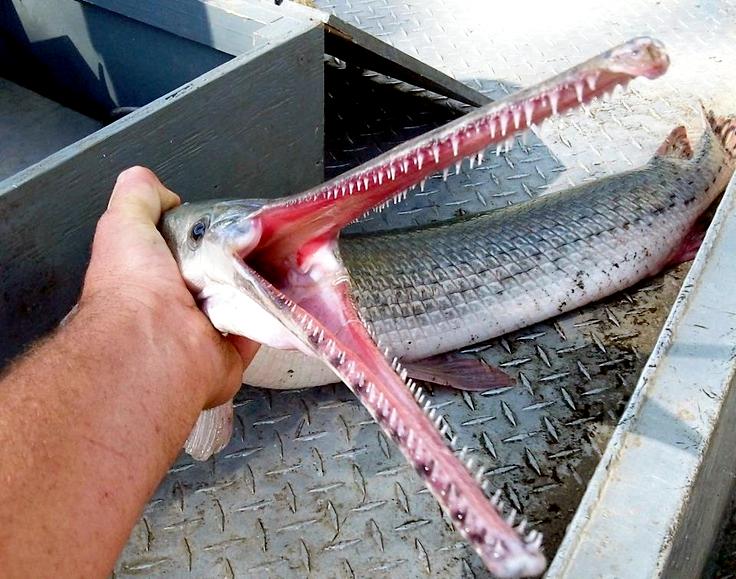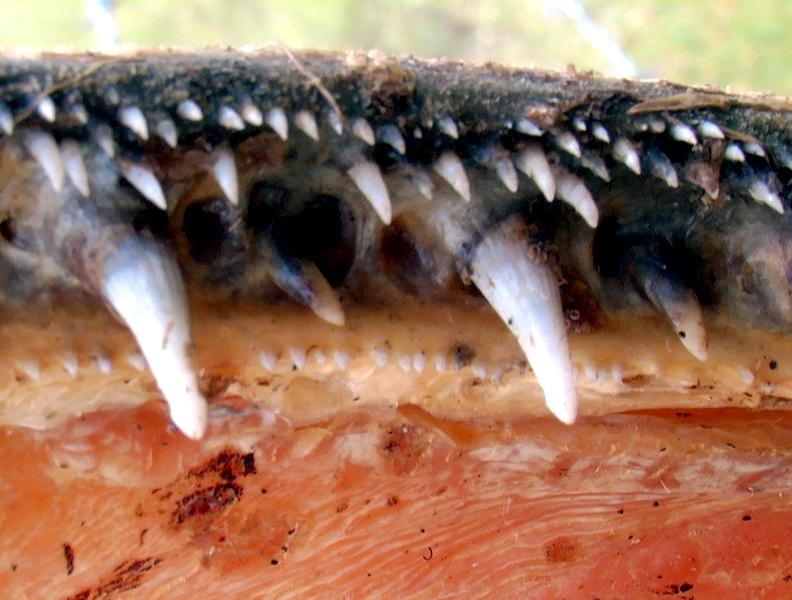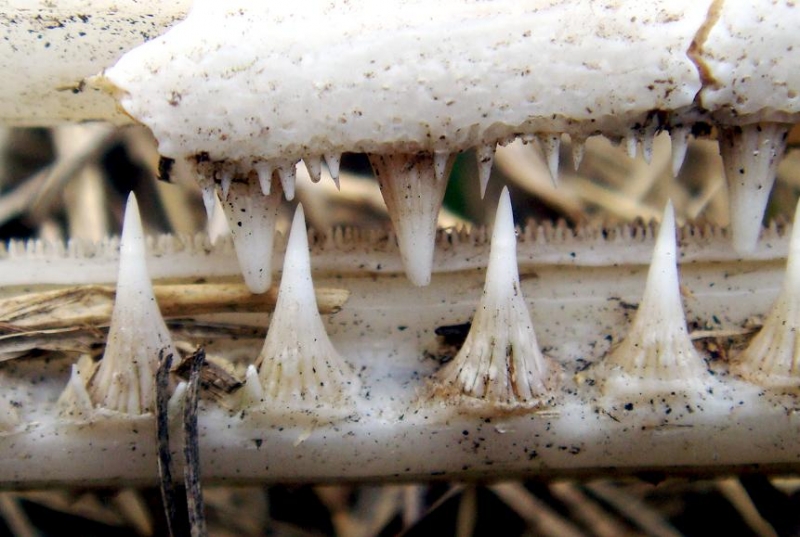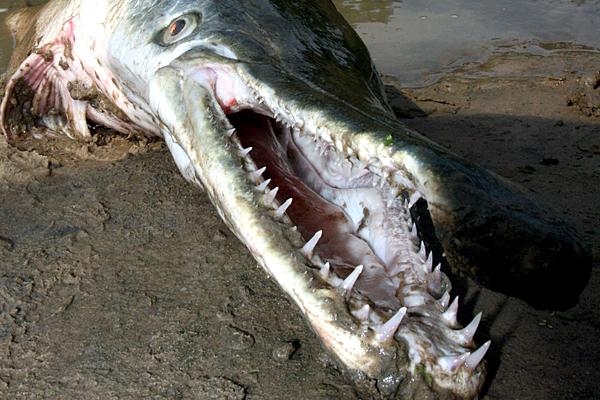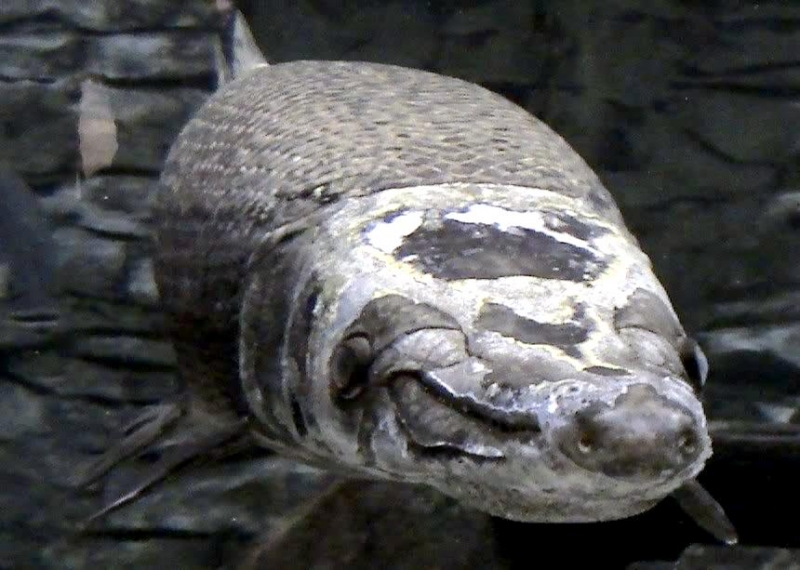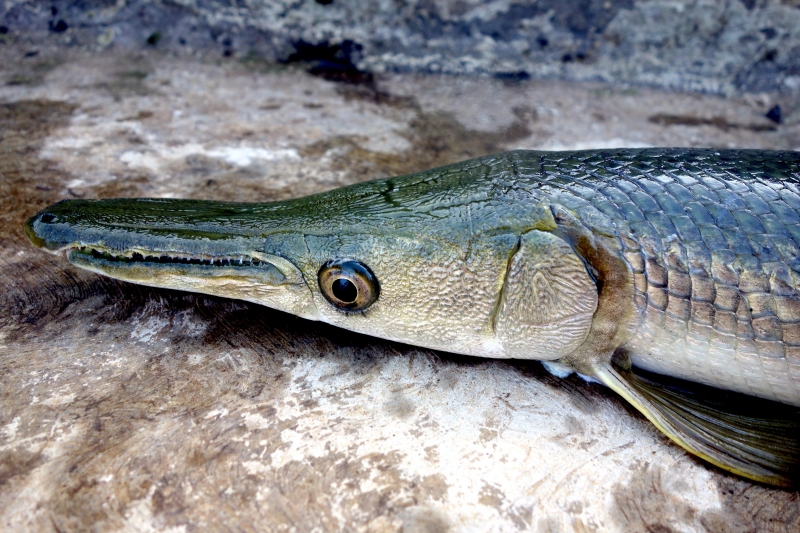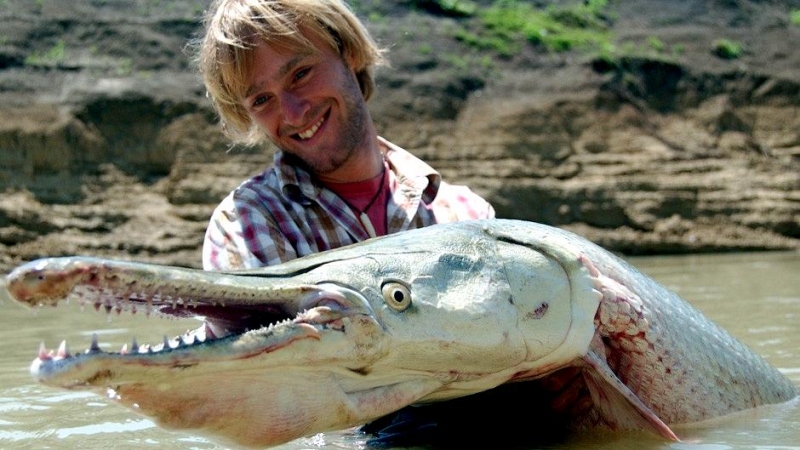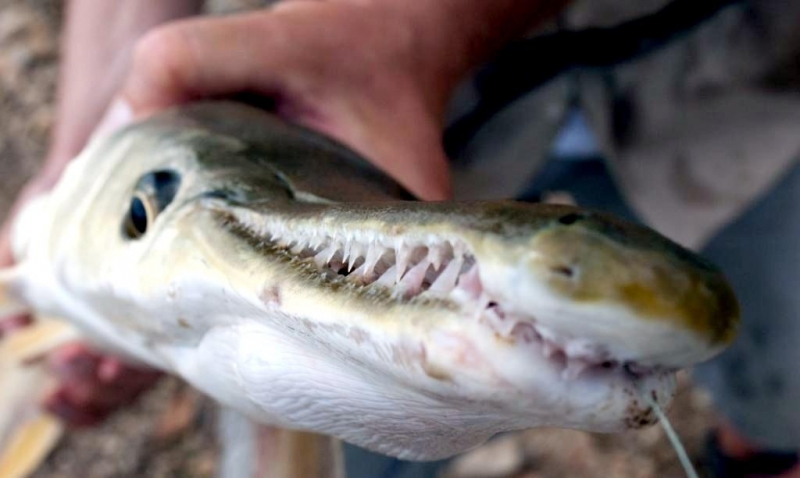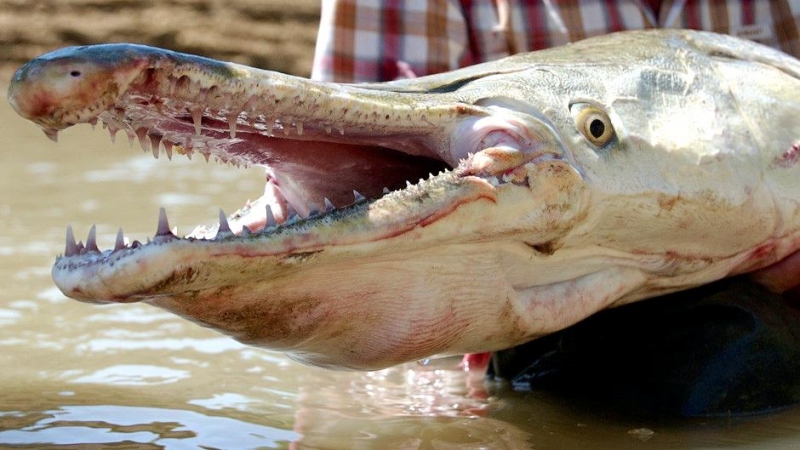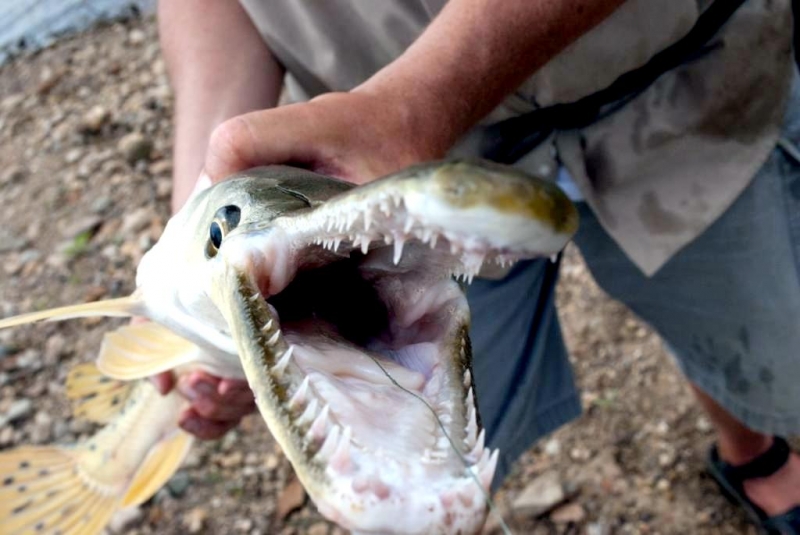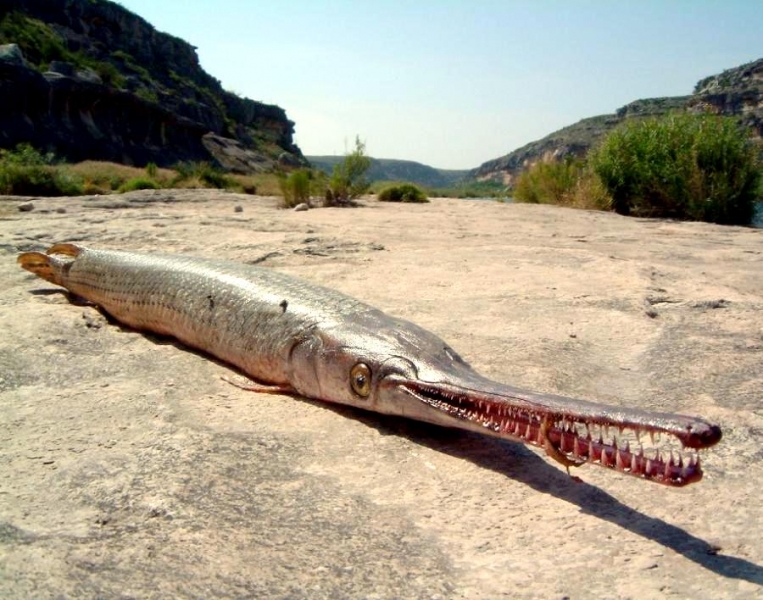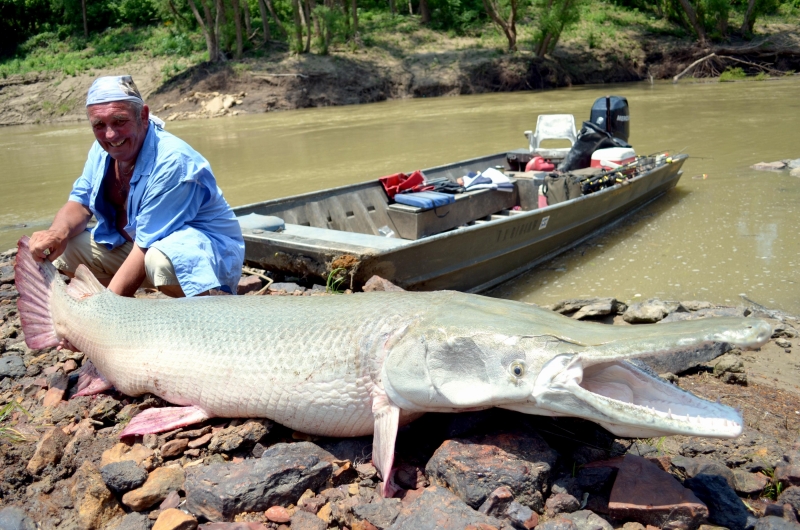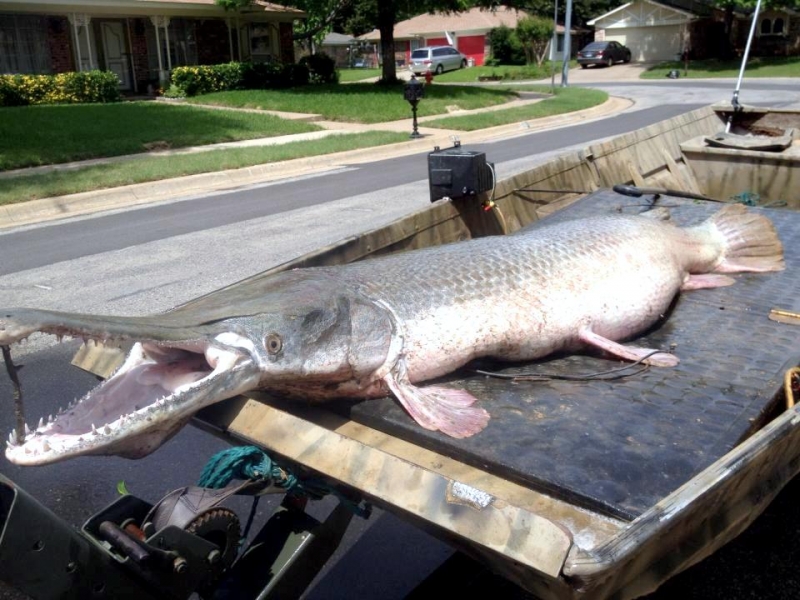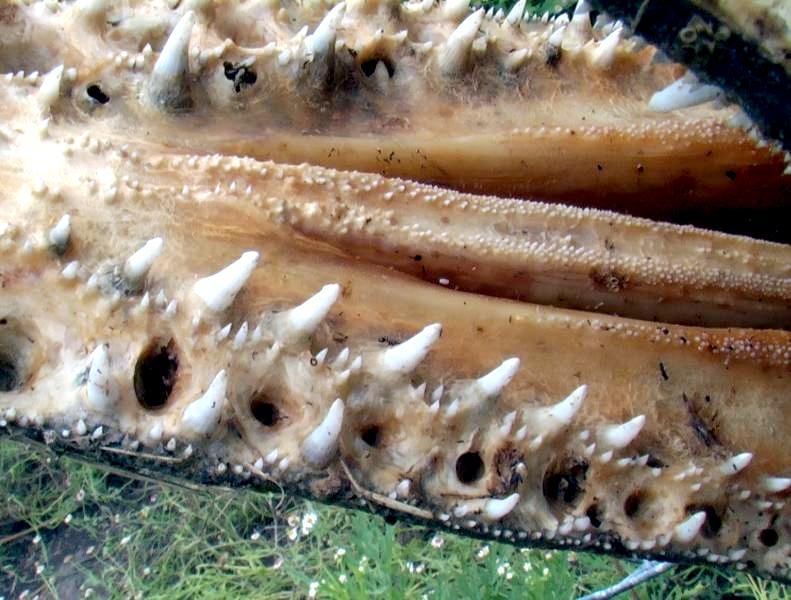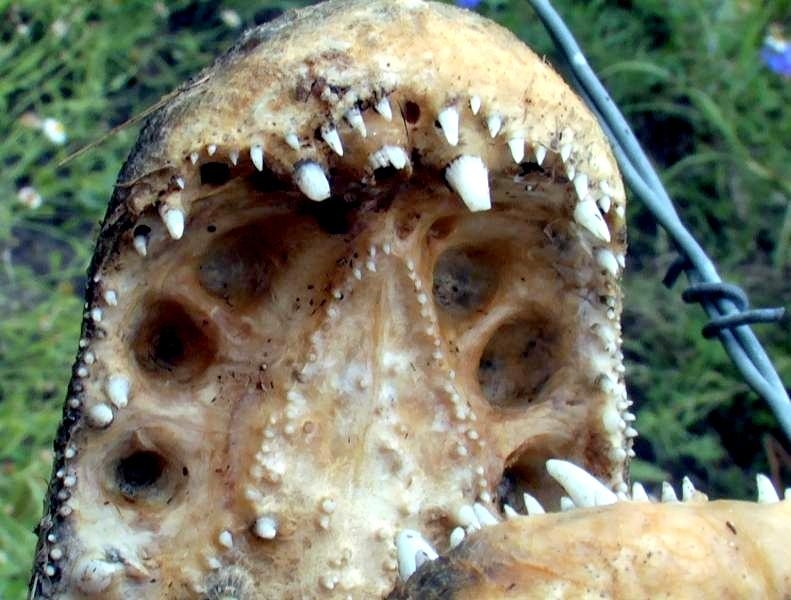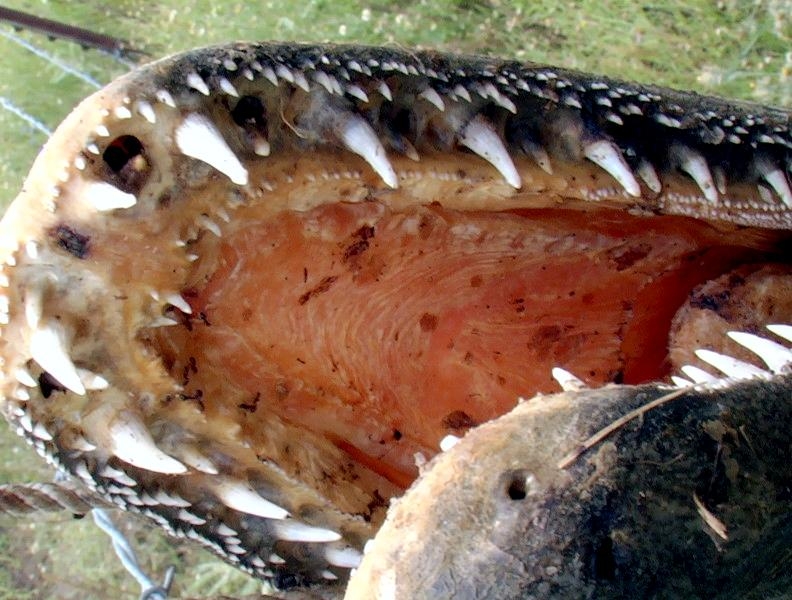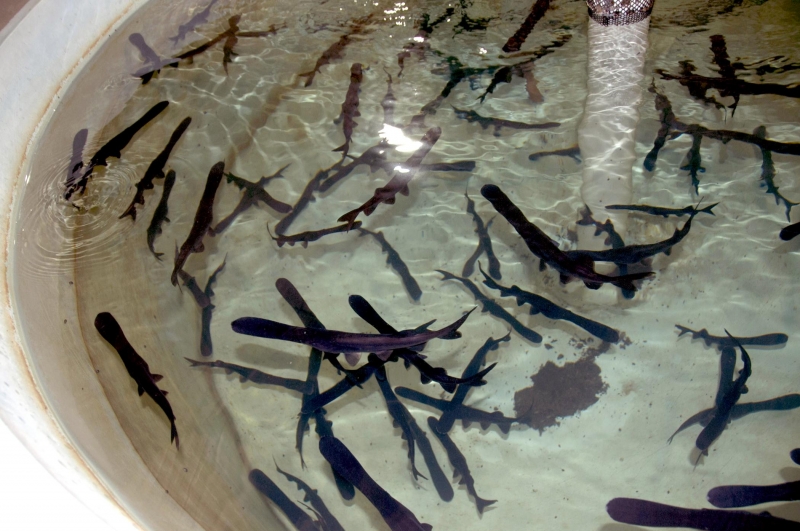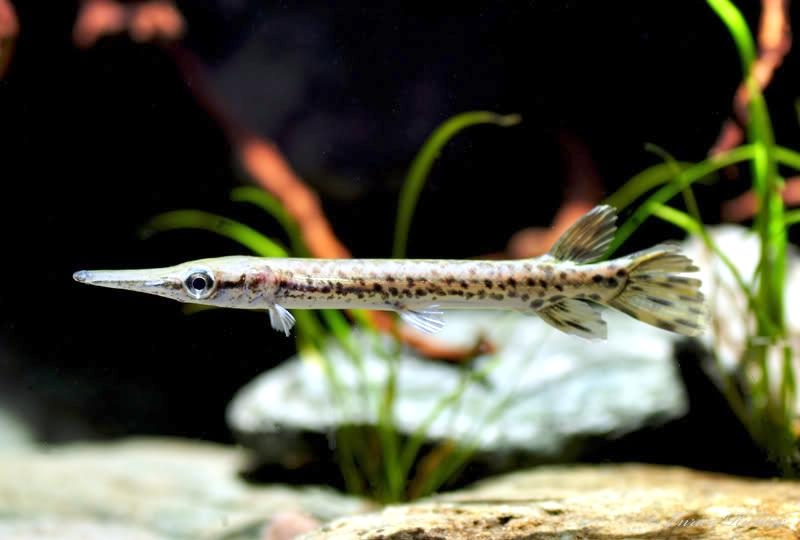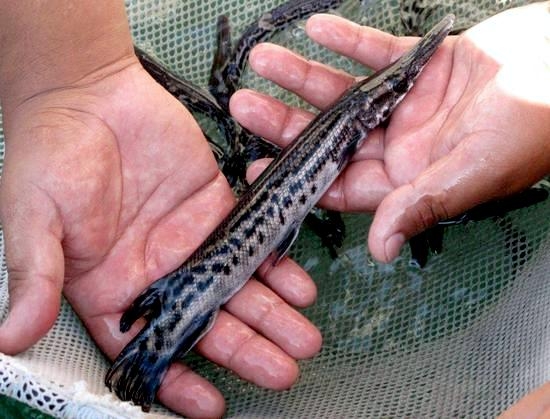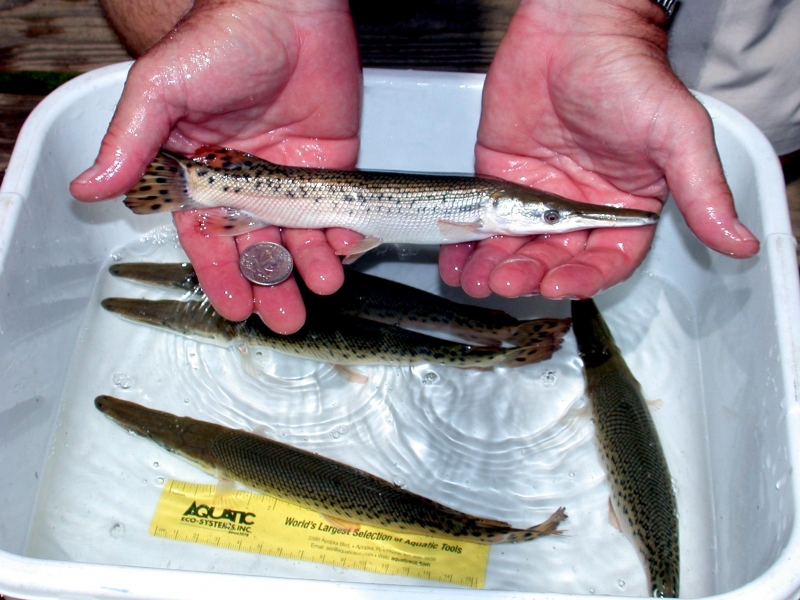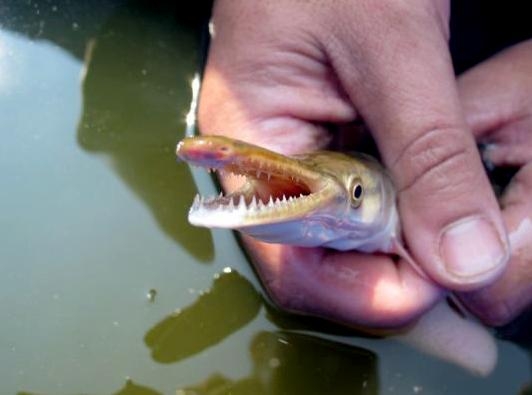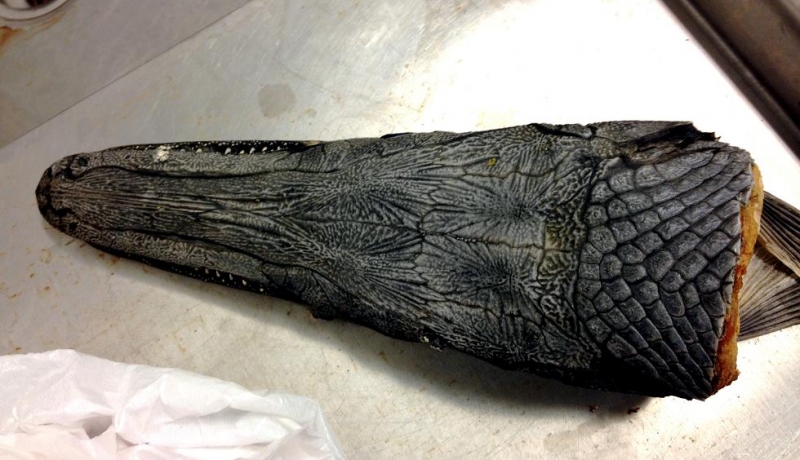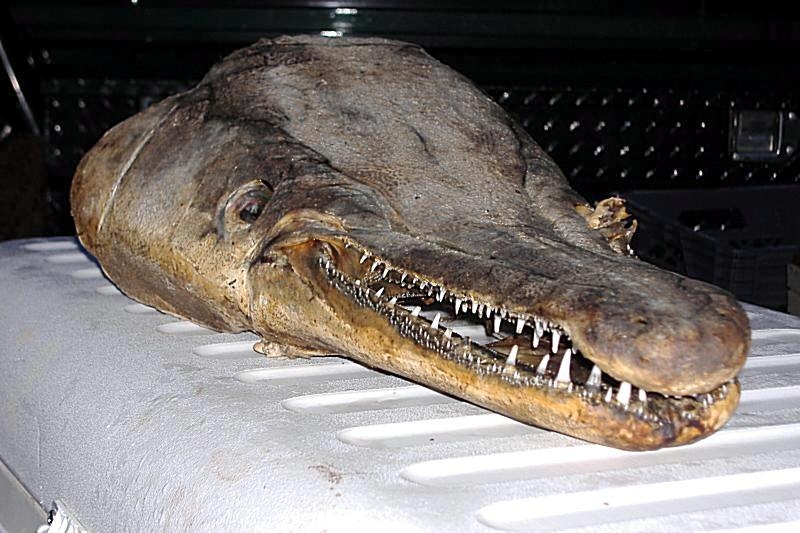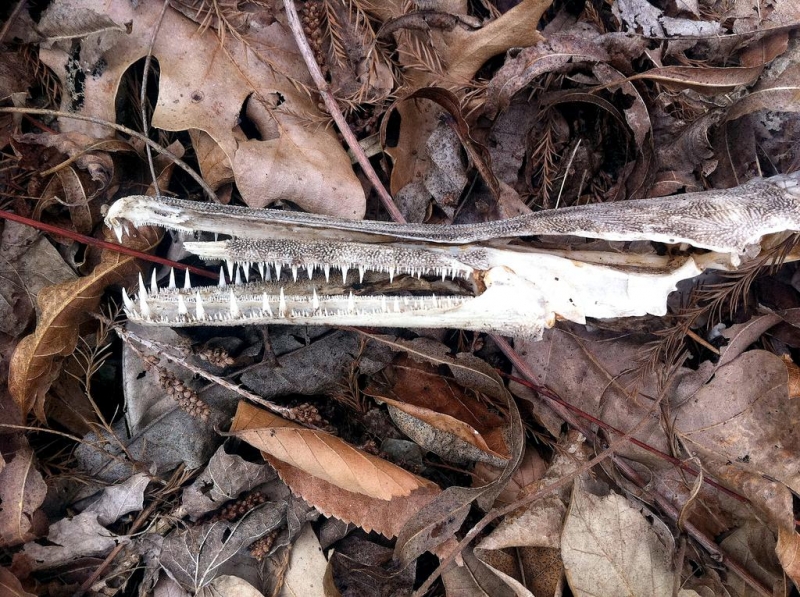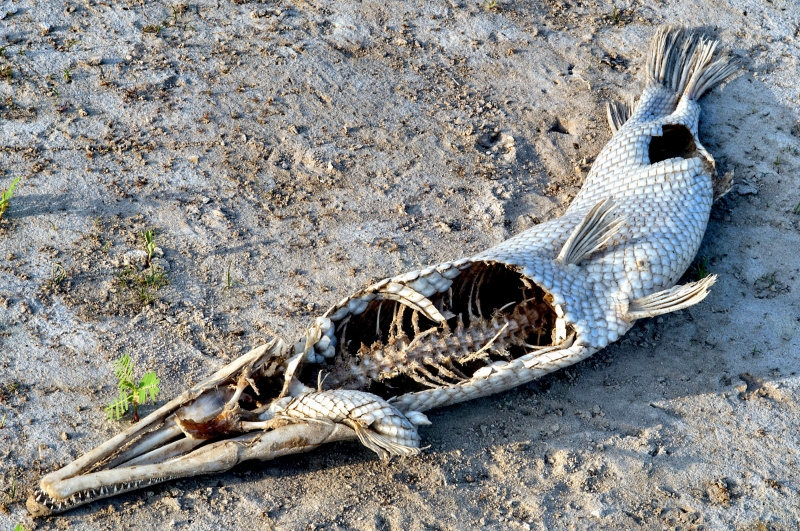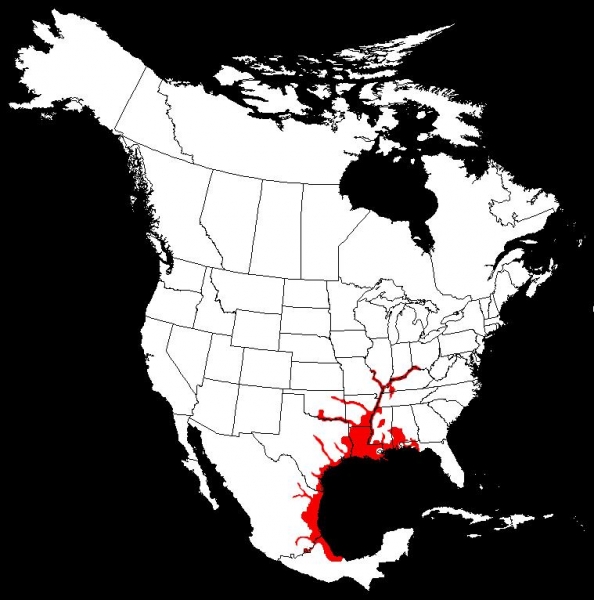“Atractosteus spatula”
The Alligator Gar is the largest gar found in North America, Central America and Cuba. The largest one of this species on record, came from the Rio Grande River in Texas and is an IGFA All-tackle World Record weighing 279 pounds. However, historic observations & photographs suggest they can attain weights and lengths of up to 350 pounds and 10 feet in length. This species, the largest in the Mississippi River Valley, once had a range that spread across most large river systems & tributaries from the Gulf of Mexico states of the U.S. and Mexico upstream into the Ohio River Valley. Alligator Gars prefer large rivers that have a large overflow floodplain, but these rivers have all but disappeared in North America due to the use of dredging, dams, dikes and levees. Recent surveys suggest populations are far below historic levels and could be declining further. In some northern states, they are believed to have been extirpated or reduced in number to non-viable populations requiring re-introductions through stockings in some locations. For these reasons, they have been identified as an imperiled species by the American Fisheries Society and a focal species of the U.S. Fish & Wildlife Service. Numerous states have already or are in the process of increasing conservation and management through regulations, habitat restoration & stocking. They are one of the largest freshwater fishes in North America, are the largest in the Lepisosteid family and are the largest freshwater fish in the Mississippi River Valley and the apex predator in the system. Alligator Gar are often confused with other more commonly encountered gar species due to their similarity of appearance to the untrained eye. They are distinct from other gars by having a heavier and broader body, a short broad snout and numerous large teeth. The Alligator Gar and other members of Atractosteus have 2 rows of teeth on the upper jaw and have an elongated, torpedo-shaped body. The caudal fin of the Alligator Gar is not symmetrical. The dorsal & anal fins are located very far back on the body. Their bodies are covered by ganoid scales, which are thick overlapping scales that create a protective covering similar to medieval chain-mail. Alligator Gars also have a highly vascularized swim bladder connected to the pharynx by a pneumatic duct. This enables them to gulp air which aids in facultative air breathing. This allows the Alligator Gar to breathe when there are very low oxygen levels in the water. Their coloration is generally dark olive-green dorsally fading to gray-white sides and white ventrally. The large ganoid scales are dotted mid-dorsally with varying camouflaging shades mixing between black and light colored golden-white spots. Larvae and juveniles have a light colored stripe or spots linearly along the dorsal line which fade with growth through the first few weeks of life resulting in a solid dark green or olive dorsal appearance. Within the first few months, they have black & dark green spots, bands and/or blotches laterally and their bodies are more olive-bronze or golden-colored dorsally with silvery-white gill plates & lower jaw.
Alligator Gars historically inhabited waters & tributaries throughout the Mississippi River Valley from Ohio to Illinois and downstream into the estuary waters of the Gulf of Mexico. They may have even existed as far north as Iowa and as far west as Kansas and Nebraska. Currently known populations exist only in the lower Mississippi River Valley from Oklahoma to the west, Arkansas to the north, Texas and portions of Mexico to the south & east to Florida. In addition to a diminished range, their numbers have also substantially decreased over the past 50 years. Alligator Gars were once abundant in many watersheds but are now difficult to find. There are many reasons being considered for their decline including habitat loss resulting from navigation and flood control alteration of streams & flood plains to over-harvesting. They were considered in some places a highly sought after sport fish, but mostly they were considered a “trash fish” and were targeted for eradication or control. Historical pictures, accounts and fishermen all support the substantial decline of the species. Studies in Alabama, Mississippi and Louisiana have shown that the Alligator Gar is very susceptible to over-fishing. It has been classified as rare in Missouri, threatened in Illinois and endangered in Arkansas, Kentucky and is soon to be in Tennessee. The Alligator Gar has been commercially fished in southern states along with other gar species and has also been fished & bow-fished. The meat of the Alligator Gar has been commercially sold for over a dollar a pound locally. It is not classified as a sport fish in some states such as Texas even though there is a popular bow fishery along the Rio Grande River. It is classified as a sport fish Alabama where the limit is 2 fish per day, which makes it off limits to commercial fishing in Alabama. Alligator Gars are important to their ecosystem in order to maintain the ecological balance. This species is most commonly found in slower moving rivers, oxbows, reservoirs and brackish estuaries along the Gulf of Mexico. The Alligator Gar is the most tolerant gar species of high salinity and occasionally strays into saltwater. Young may be seen at the surface in debris such as leaves & twigs. They have been found to congregate in high densities at certain locations for pre-spawn staging (typically April-May), spawning (typically April-June) and over wintering (December-February). Observations and data suggest solitary or territorial behavior post-spawn and through the fall months. Spawning usually occurs when water temperatures reach approximately 23 °C. Fecundity in females has a positive correlation with total length. Females generally carry an average of 138,000 eggs. A female flanked by several males will deposit eggs on vegetation. The fertilized eggs are extremely adhesive and will firmly stick to the vegetation. Eggs usually hatch within 48-72 hours after spawn. Larvae remain attached to vegetation via a suctorial disc for several days. During the final stages of egg yolk absorption, the larvae will detach and begin to search for food. This development takes 5 to 10 days after hatch.
Juvenile Alligator Gars feed on plankton, invertebrates, amphibians and fish before transitioning to almost exclusively fish. They stay near the surface utilizing floating straw, grasses & debris for cover, while in the later months of the first year they remain in deeper water and primarily only approach the surface for supplemental air and feeding at night. Eggs & yolk sacs have been found to be extremely toxic to crustaceans and vertebrates other than teleost fishes, presumably as a defense mechanism. Crayfish and Blue Crabs in particular are susceptible to the toxin. Humans are also susceptible and should not eat or even handle the eggs without taking proper precautions. Growth rates of young-of-year fish are extremely fast and it is not uncommon for a fish to attain 10-12 inches in size within the first year after hatch. There currently is no information on juvenile Alligator Gar life history from age 1 up to adult fish (re-productively viable 45 lbs). These fish are presumed to be in such low numbers and spread out over such vast distances & habitat that they are rarely encountered. It is unknown whether or not they are migratory. Alligator Gars appear sluggish, however they are voracious predators. Alligator Gars are ambush predators as they lay still in the water until an unsuspecting fish swims by and then lunging forward & lashing the head from side to side in order to capture prey. Alligator Gars will lay still at the top of the water for long periods of time, appearing to be merely a log. Adult fish feed primarily on fish, but have been found to also consume crabs, birds, reptiles, amphibians and small mammals. They are believed to forage primarily at night, but have been seen both day & night lying motionless against floating logs, debris or under overhanging trees. Alligator Gars are frequently observed surfacing for air. The reason for this is uncertain. They are commonly heard & seen blowing bubbles and making gulping sounds in concert with other Alligator Gar suggesting possible communication.

